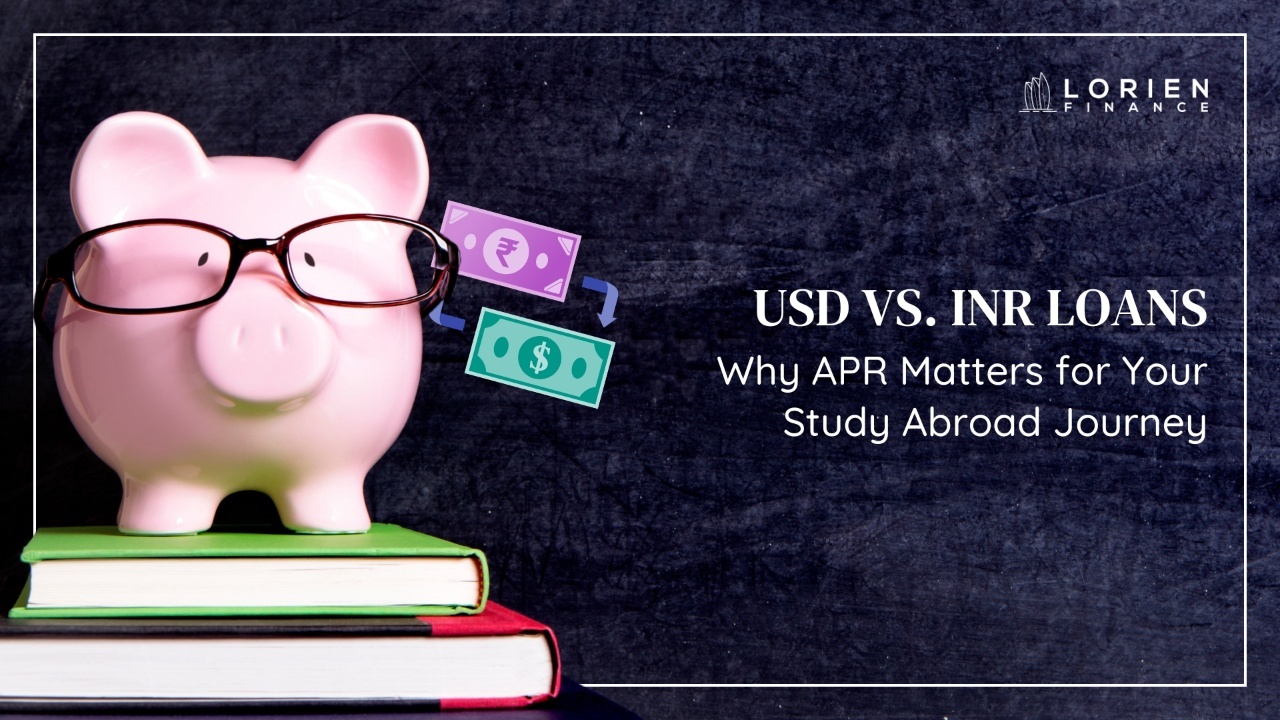Overcoming Difficult Education Loan Situations

So, you’ve set your sights on studying abroad—imagining the diverse classrooms, insightful lectures, and the adventure of a lifetime. But then, reality hits and brings you to the ground: financing your dream. It’s like planning a road trip with an empty fuel tank! Many aspiring students find themselves in this exact spot. The aspiration is there, but the path is riddled with financial hurdles. Let’s dive into ways of overcoming education loan challenges and, more importantly, how to conquer them. The Collateral Conundrum The Challenge: Traditional banks often require substantial collateral—like property or fixeddeposits—to secure an education loan. But not everyone has assets to pledge. The Solution: Explore lenders offering unsecured education loans. Some financial institutionsunderstand this predicament and provide loans without collateral, focusing instead on youracademic merit and the potential of your chosen course. The Cosigner Catch The Challenge: Many lenders insist on a co-signer with a strong credit history. For studentswithout such a guarantor, this becomes a significant barrier. The Solution: Look for loan providers that don’t mandate a co-signer. Some international financiersassess your profile independently, eliminating the need for a guarantor. Limited Loan Options for Specific Courses or Countries The Challenge: Some banks have restrictions on financing studies in particular countries orunconventional courses, limiting your choices. The Solution: Research and approach specialised financial institutions that offer flexible loanoptions. They often have fewer restrictions and support a broader range of study destinations andprograms. Currency Fluctuation Woes The Challenge: The ever-changing exchange rates can affect the loan amount and repayment,especially with a weakening rupee. The Solution: Consider loans that offer forex protection or opt for multi-currency loans to hedgeagainst currency risks. Staying informed about economic trends can also help in making timelyfinancial decisions. High-Interest Rates and Hidden Charges The Challenge: Some loans come with steep interest rates and undisclosed fees, making repayment burdensome. The Solution: Always compare loan offers from multiple lenders. Look beyond the interest rate;scrutinise processing fees, prepayment charges, and other hidden costs. Transparent lenders willprovide a clear breakdown of all expenses involved. Lengthy and Complex Application Processes The Challenge: The paperwork and procedural delays can be overwhelming, causing stress andpotential loss of admission offers. The Solution: Seek assistance from financial advisors or platforms that specialise in educationloans. They can streamline the process, ensuring timely approvals and disbursals. Insufficient Loan Amounts The Challenge: Sometimes, the sanctioned loan doesn’t cover all expenses, including tuition, livingcosts, and travel. The Solution: Present a comprehensive budget to your lender, detailing all anticipated expenses.Some institutions offer top-up loans or have provisions to reassess and increase the loan amountbased on genuine needs. How Lorien Finance Can Turn the Tide At Lorien Finance, we get it—financing your education shouldn’t be a Herculean task. Here’s howwe make it smoother: Embarking on your study abroad journey is thrilling. Don’t let financial hurdles dim your shine.With the right guidance and support, the world is your classroom. Your dream deserves a chance.Let Lorien Finance fuel your journey from aspiration to achievement. FAQs Can I get a study abroad loan if I don’t have a co-signer?No worries. Some financial institutions provide loans without requiring a co-signer, focusing solelyon your credentials. How do I manage currency fluctuations during repayment?Opt for loans with forex protection or multi-currency options to mitigate currency risk. Are there loans for unconventional courses or less popular countries?Yes, specialised lenders offer flexible loans covering a wide range of courses and destinations. How can I ensure there are no hidden charges in my loan?Always read the fine print and choose transparent lenders who provide a detailed breakdown of allfees and charges.
Top Countries to Pursue a Master’s Degree in 2025

So, you’ve decided to pursue a master’s degree abroad? That’s awesome! But with so many options, choosing the right country can feel like picking a series to binge-watch—exciting but confusing. Should you go for the tried-and-tested destinations like the UK and Germany? Or explore rising education hubs in Asia and the Middle East? Let’s break it down so you can make a choice from the top countries for Master’s in 2025 that suits your academic goals, budget, and future career aspirations. Germany – World-Class Education Without the Price Tag Why Germany? Popular Courses Average Tuition Fees: €250 – €3,000 per year Cost of Living: €800 – €1,200 per month United Kingdom – Fast-Track Your Career in Just One Year Why the UK? Popular Courses Average Tuition Fees: £10,000 – £38,000 per year Cost of Living: £1,200 – £1,800 per month Ireland – Europe’s Rising Star for Tech & Business Why Ireland? Popular Courses Average Tuition Fees: €10,000 – €25,000 per year Cost of Living: €1,000 – €1,500 per month UAE – The Emerging Study Abroad Giant Why the UAE? Popular Courses Average Tuition Fees: AED 40,000 – AED 100,000 per year Cost of Living: AED 3,000 – AED 6,000 per month Singapore – Asia’s Innovation & Finance Powerhouse Why Singapore? Popular Courses Average Tuition Fees: SGD 25,000 – SGD 50,000 per year Cost of Living: SGD 1,500 – SGD 3,000 per month USA – Still a Top Choice, But With Challenges Why the USA? Popular Courses Average Tuition Fees: $25,000 – $60,000 per year Cost of Living: $1,500 – $3,000 per month Canada – A Great Choice, But Proceed with Caution Why Canada? Popular Courses Average Tuition Fees: CAD 32,000 – CAD 50,000 per year Cost of Living: CAD 15,000 – CAD 25,000 per year Your perfect study abroad destination depends on your: How Can Lorien Finance Help? No matter where you choose to study, Lorien Finance has got your back! Why let financial hurdles hold you back? Reach out to Lorien Finance and take the first step towardyour global dream today! FAQs Which country is the cheapest to study for a master’s degree?Germany offers almost free education at public universities, making it the most affordable option. Which country gives the best post-study work opportunities?The UK, Ireland, and Canada offer strong post-study work visas for international students. Should I study in the US despite visa challenges?The US still has top-ranked universities and career opportunities. However, visa uncertainty meansstudents should have a backup plan. Is the UAE a good alternative to traditional destinations?Yes! The UAE is emerging as an education hub with high-quality universities and strong jobprospects.
USD vs. INR Loans: Why APR Matters for Your Study Abroad Journey

Imagine this: You’ve got your acceptance letter, your dream university awaits, and the excitement is through the roof. But then reality hits—how will you finance your education abroad? You start looking at loans, and suddenly, you’re bombarded with numbers, interest rates, hidden charges, and fancy banking terms like APR. It feels overwhelming, right? Whether your fuding is through USD vs INR loans, learn why APR matters! Well, take a deep breath—we’ve got your back. One of the biggest mistakes students make is focusing only on the interest rate while choosing aloan. But what if we told you that’s only half the story? The real game-changer is APR (AnnualPercentage Rate)—the actual cost of borrowing, including fees and other charges. This onenumber can make or break your loan decision, and today, we’re breaking it down for you. So, grab a cup of chai , and let’s simplify USD vs. INR Loans and why APR is the secret sauce tomaking the smartest financial choice for your study abroad dreams! Understanding APR: Your Loan’s True Cost, No Hidden Surprises APR isn’t just another boring financial term—it’s your best friend when comparing loans. Think of it as the MRP (Maximum Retail Price) of a loan. Just like you wouldn’t buy a gadgetwithout knowing the total cost (including taxes and delivery), you shouldn’t take a loan withoutconsidering its APR. Here’s why: USD Loans vs. INR Loans: The Ultimate Face-Off When you’re funding your education abroad, you typically have two options: Each has its pros and cons, and the APR of each loan type will vary based on multiple factors. Let’sbreak it down: Interest Rates: Who Wins? Why? International lenders have access to cheaper capital, whereas Indian lenders face higherborrowing costs. Collateral: Do You Need to Pledge Assets? Why? USD lenders cater to students who might not have strong financial backing, while Indianbanks demand security. Co-Signer: Who Has Your Back? Why? Foreign lenders want an assurance of repayment from someone in their country. Why APR is the Real Deal in Loan Comparison APR is your financial reality check. A loan with a low-interest rate but high fees can be moreexpensive in the long run. APR helps you compare loans apples to apples, so you don’t fall formarketing gimmicks. Example: At first glance, Loan A seems cheaper, but after adding hidden costs, Loan B is almost the same! Currency Fluctuations: The Wild Card Here’s something most students don’t think about: If you take a USD loan, you’ll repay in USD. Sounds obvious, right? But here’s the catch: What’s the risk? If the rupee falls from ₹87/USD to ₹95/USD, your EMI amount in INR goes up! How Lorien Finance Can Make Your Loan Journey Smoother We get it—choosing the right education loan is like playing a high-stakes game of chess. Onewrong move, and you could be paying lakhs extra! That’s where Lorien Finance steps in: Your study abroad dream shouldn’t be delayed because of financial confusion. Let’s make ithappen, stress-free! Choosing between a USD and INR loan isn’t just about interest rates. APR is your true cost ofborrowing, and ignoring it could cost you lakhs in the long run. Want expert help with your education loan? Let Lorien Finance simplify your journey so you canfocus on what matters—your future! Talk to our experts today & secure the best loan for your study abroad adventure! FAQs Are USD loans always better than INR loans?Not always! USD loans have lower rates but come with currency risks. INR loans provide stability,but at a higher cost. Will my INR loan cover all my expenses abroad?Indian banks may not cover 100% of expenses (like living costs). You might need a mix of INR andUSD loans. Can I switch from a USD loan to an INR loan later?Some lenders offer refinancing options, but not all loans are convertible. Check with your lenderbefore taking the plunge. How do I find the best loan for me?That’s where Lorien Finance comes in! We help you compare, apply, and get the best loan tailoredto your needs.
